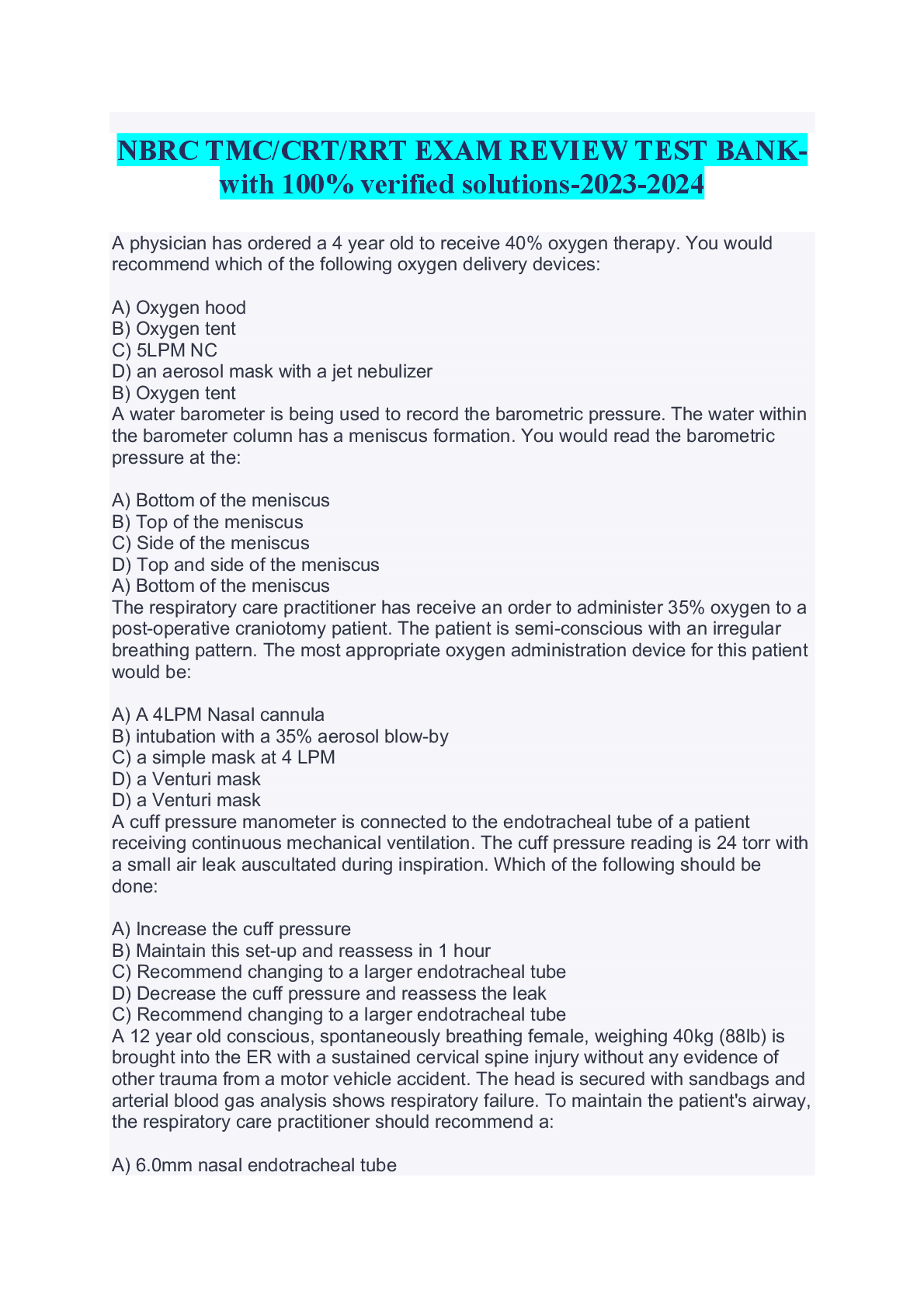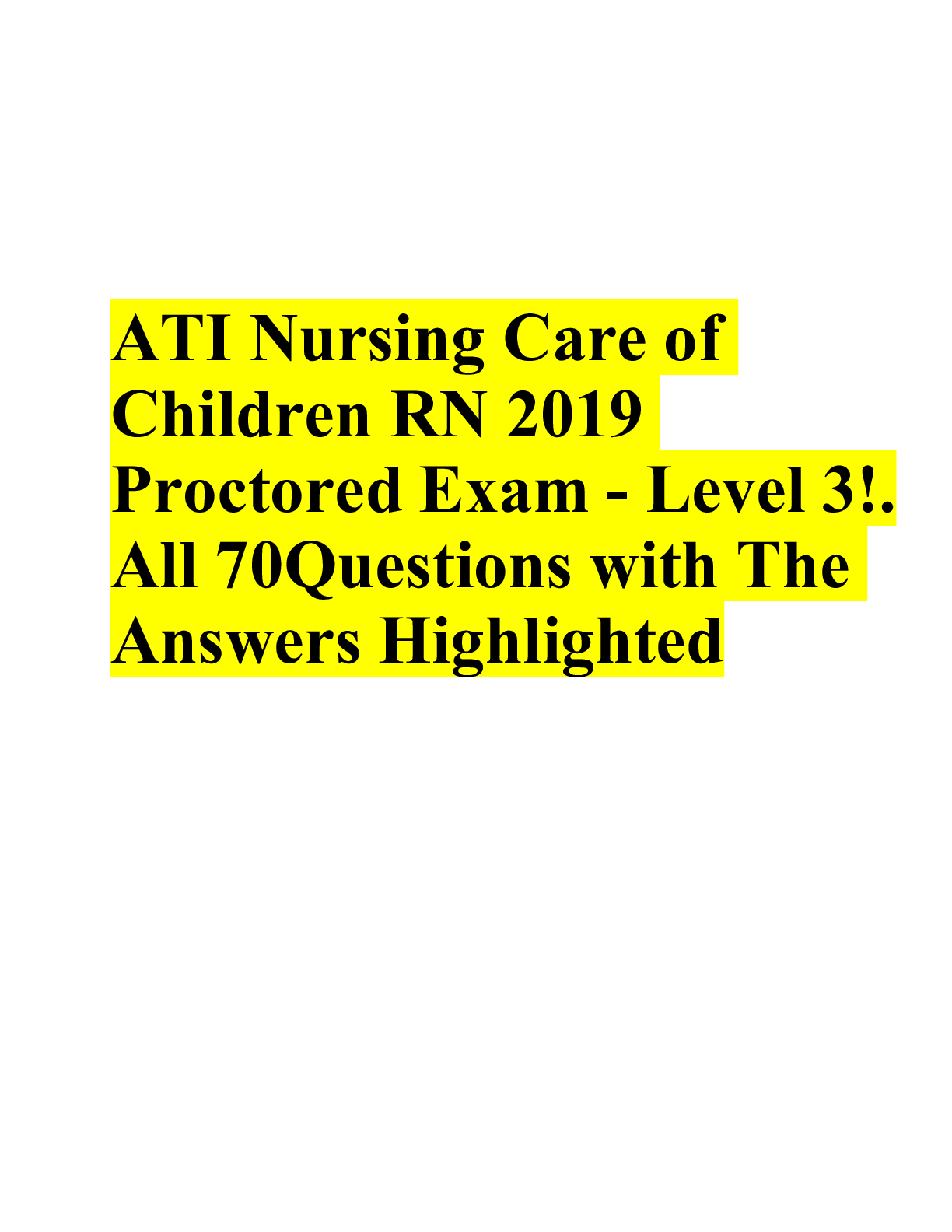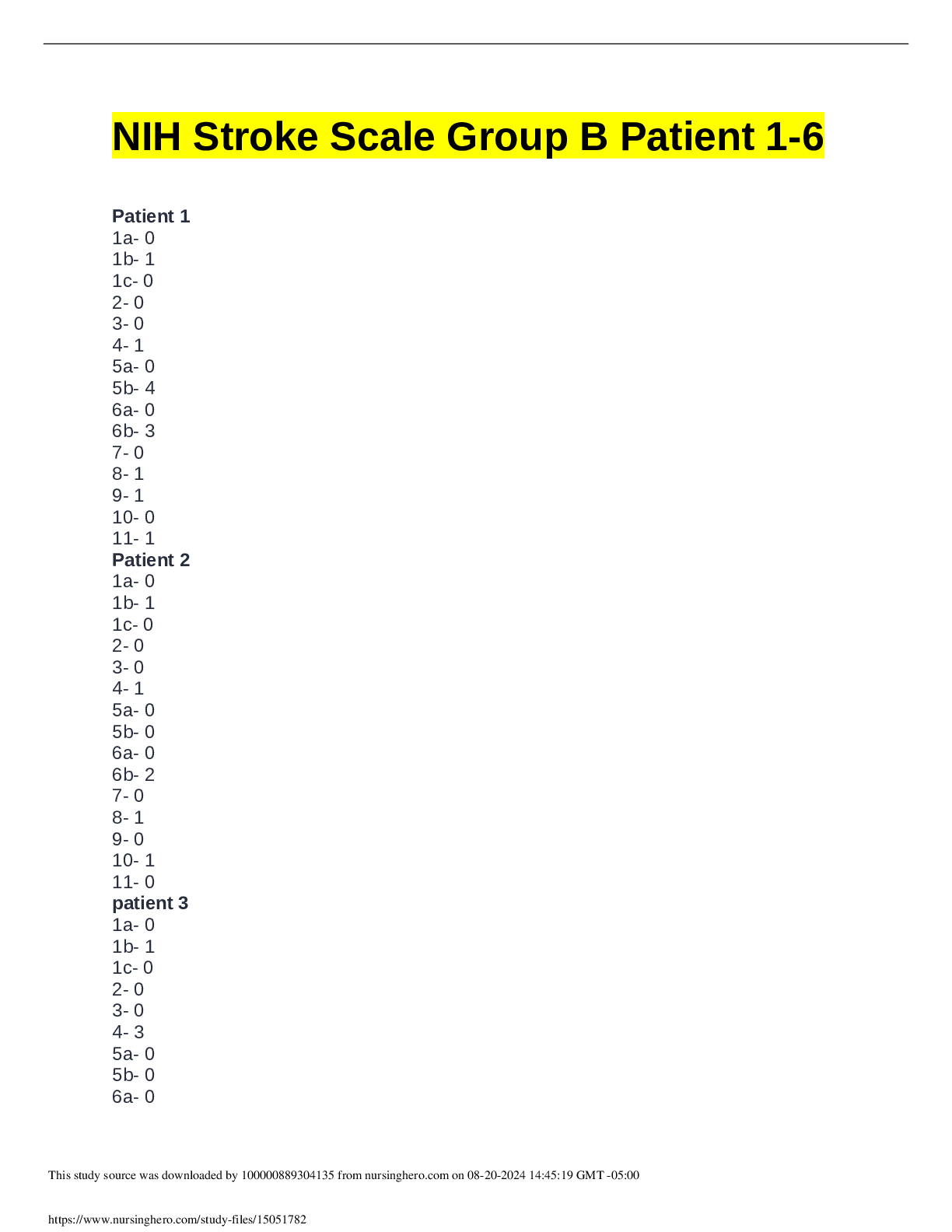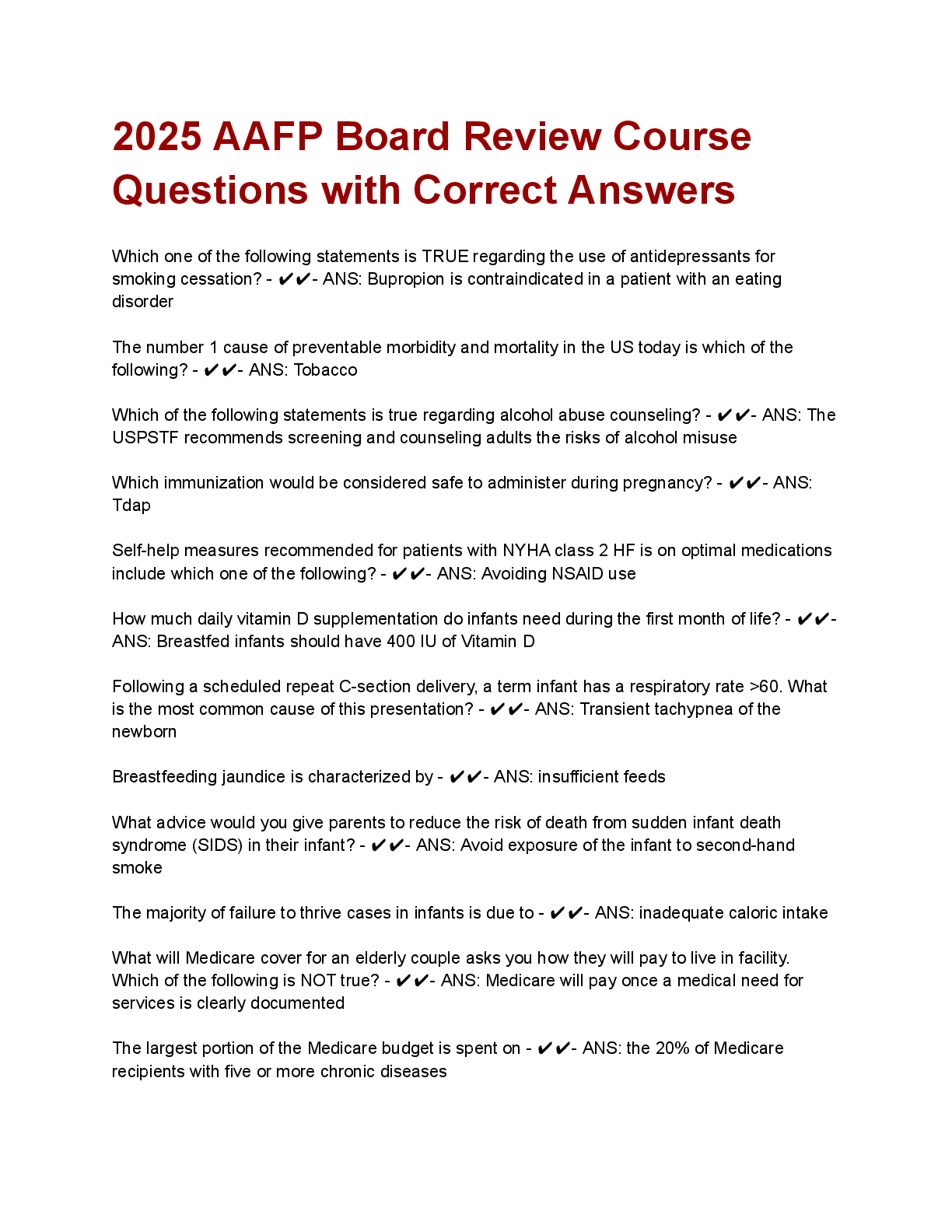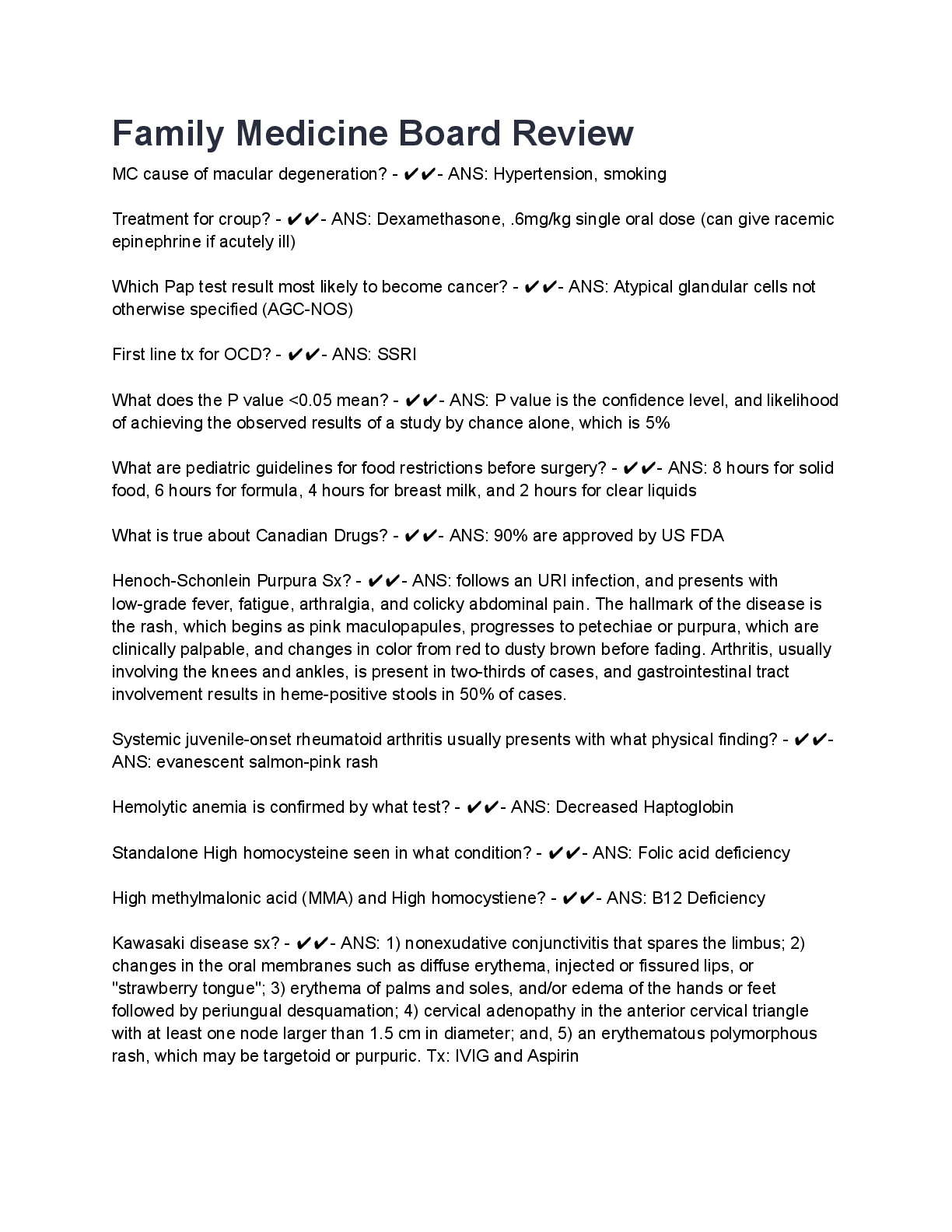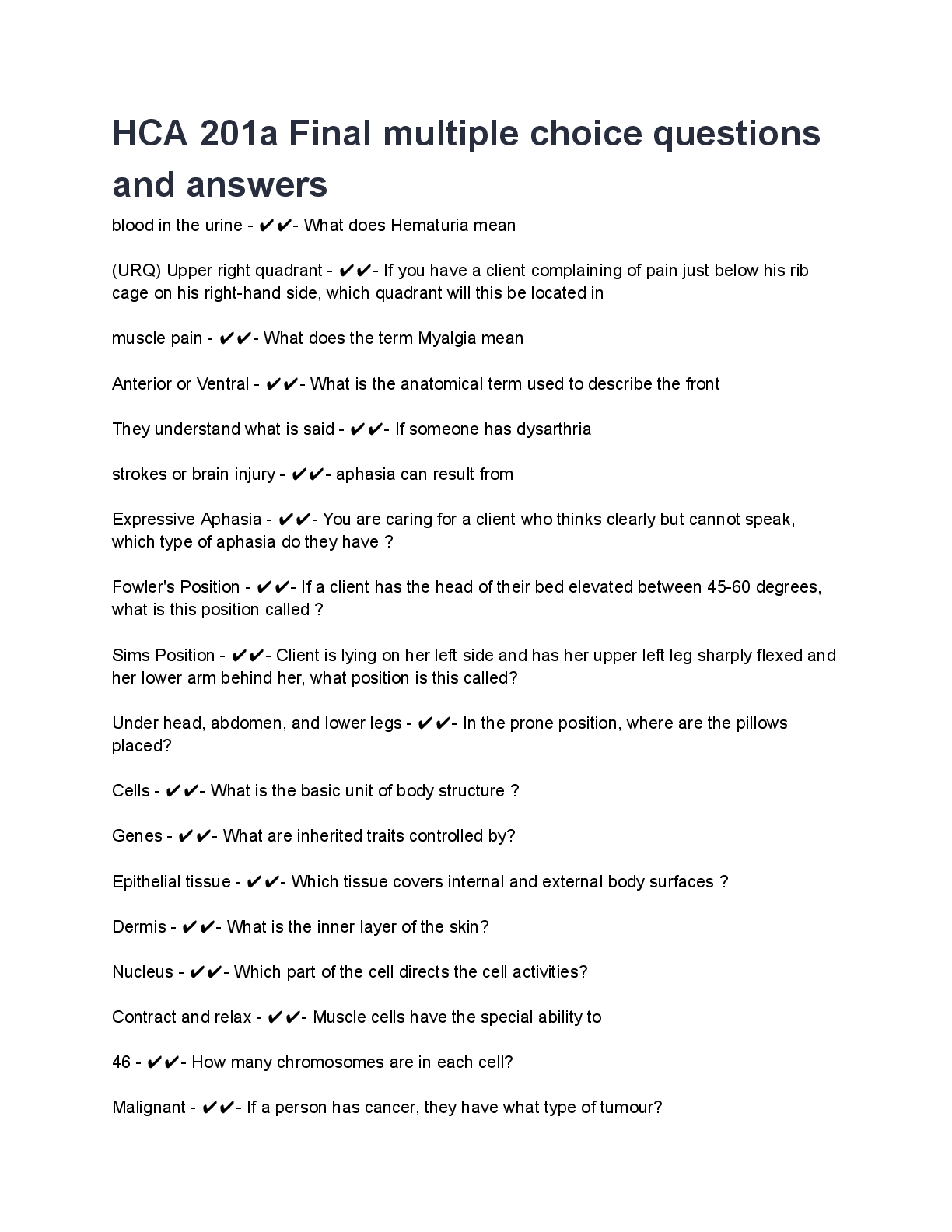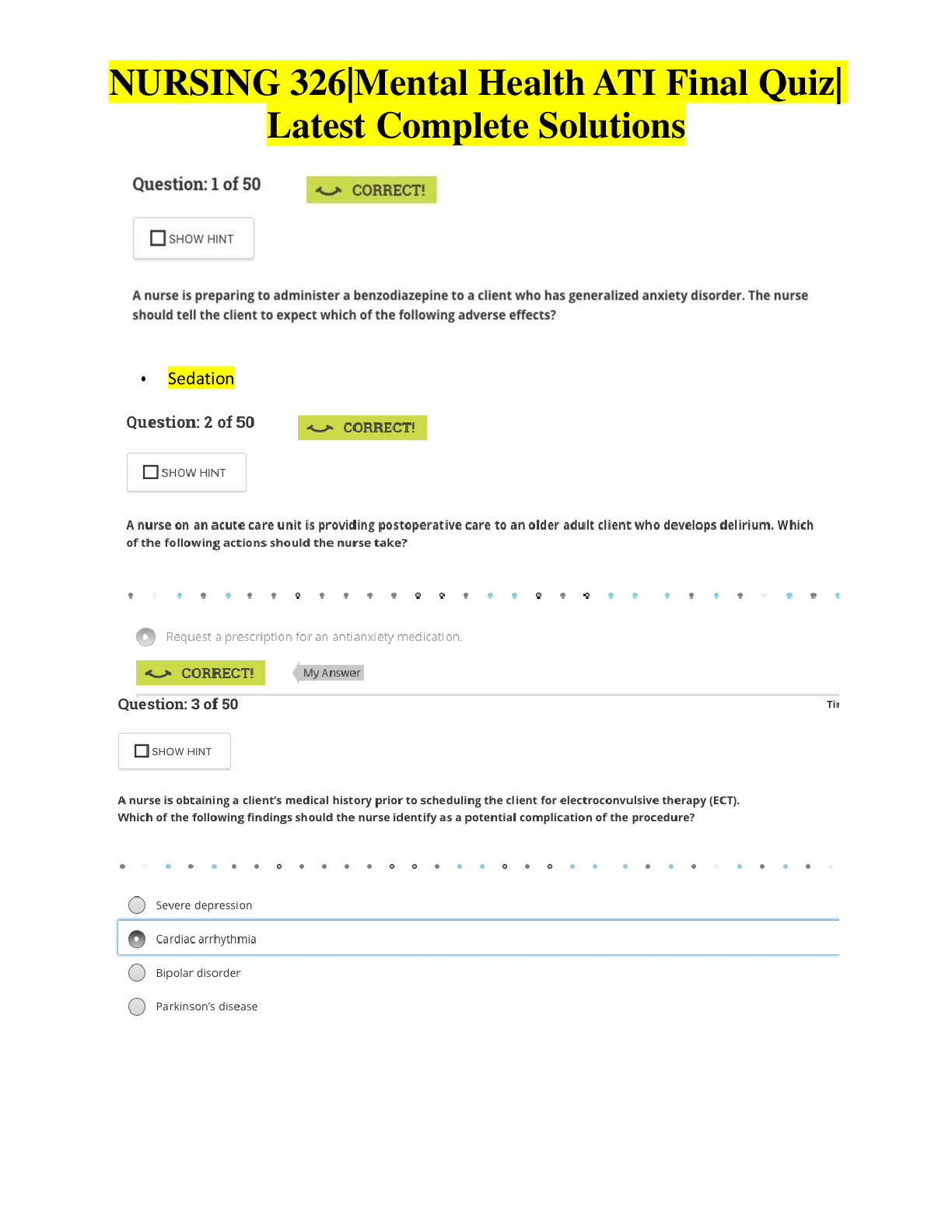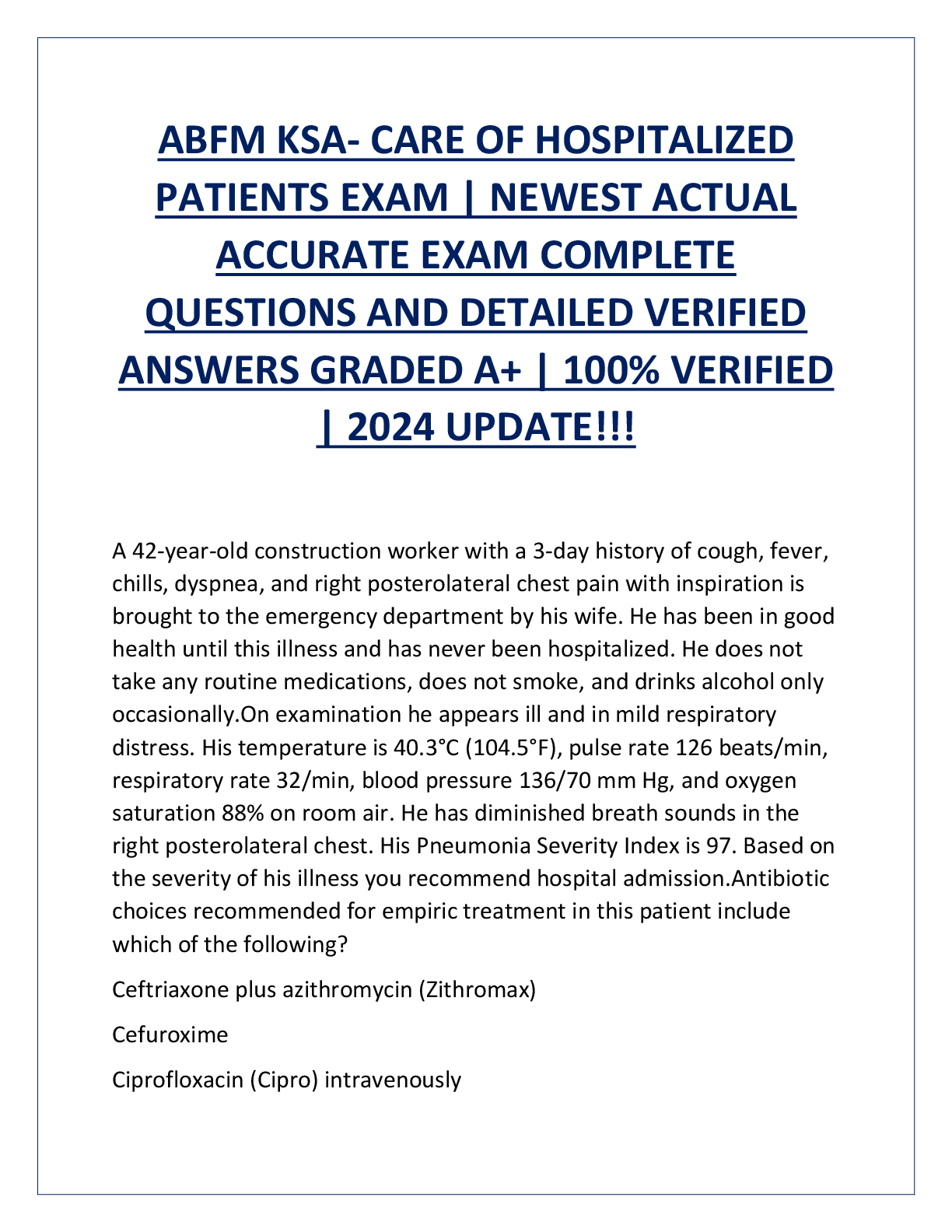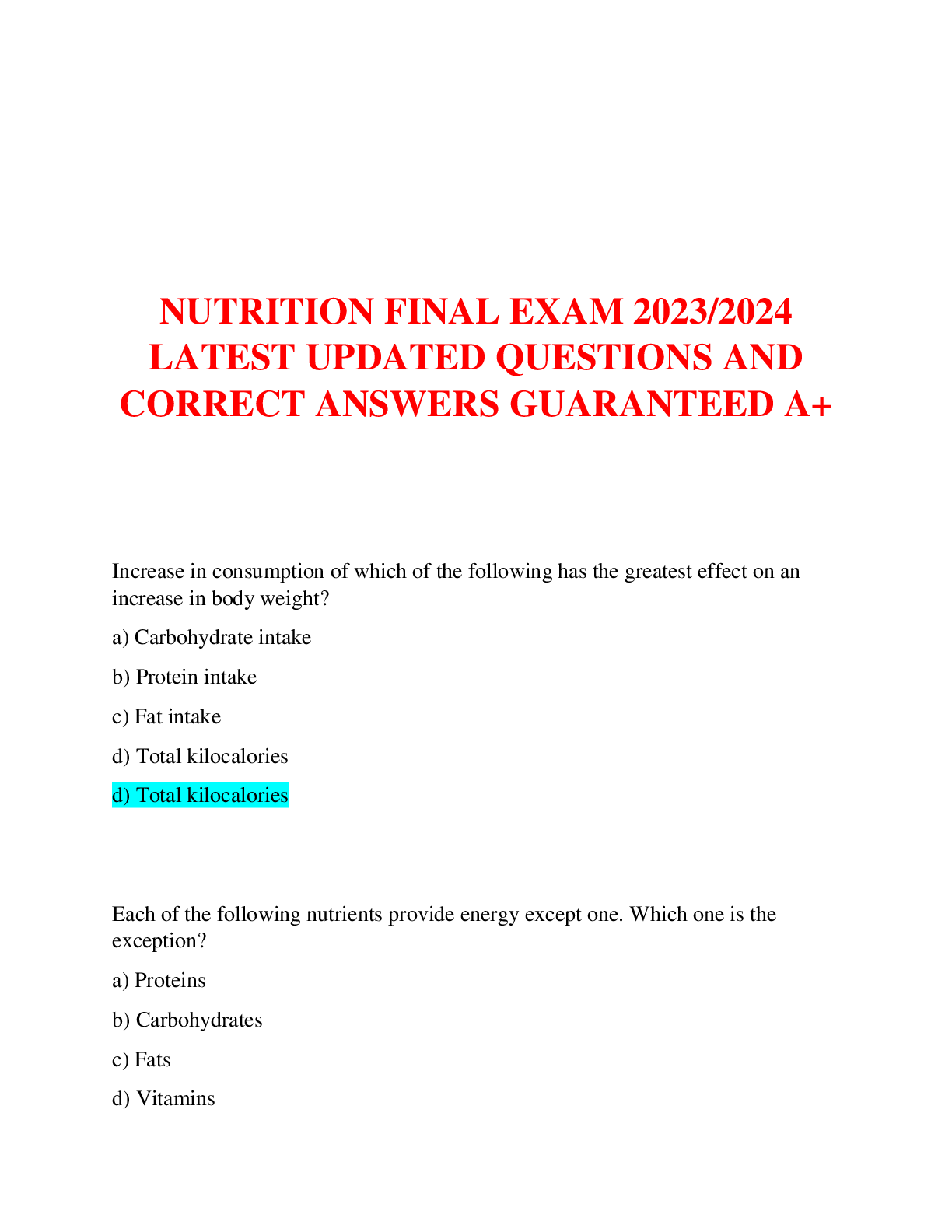Women's Health- A Primary Care Clinical Guide > QUESTIONS & ANSWERS > Care of Women KSA 2025 (All)
Care of Women KSA 2025
Document Content and Description Below
A 24-year-old graduate student comes to your office to be tested for sexually transmitted infections. The medical assistant tells you that the patient was upset when she saw how much she weighed. On... questioning, the patient says that for the past year she has experienced episodes of uncontrollable eating followed by self-induced vomiting. Her weight is 82 kg (181 lb) and her BMI is 32 kg/m2. Which one of the following is true regarding treatment for this condition? A. Cognitive behavioral therapy has the best evidence for treatment B. SSRI monotherapy is a first-line treatment option C. Anemia is an indication for hospitalization D. More than half of patients will relapse after treatment - ✔✔- ANS: ANSWER: A Eating disorders include anorexia nervosa, bulimia nervosa, and binge eating disorder, and the DSM-5 added avoidant/restrictive food intake disorder, rumination disorder, and pica to this group in 2014. Mood disorders, anxiety, substance use, and personality or somatic disorders are common in these patients. Screening can include regularly asking questions about mood, body image concerns, and eating behaviors. Before establishing the diagnosis based on history, it is important to perform a physical examination that includes measurement of orthostatic vital signs and obtain a metabolic panel that includes magnesium and phosphate levels. This patient appears to have bulimia nervosa, which consists of eating an excessive amount of food in a short period of time (often >2000 calories in one sitting), with a concomitant feeling of loss of control. Because patients with bulimia base their self-worth on their body shape and weight, they follow this binge eating with compensatory behaviors to prevent weight gain, such as vomiting, laxative use, food restriction, excessive exercise, or taking diuretics. Episodes occur, on average, one or more times a week for 3 months or longer, and the disorder is associated with a two- to sixfold increase in age-adjusted mortality. After the diagnosis is established and a goal weight has been accepted, the patient is best served with treatment delivered by a team that includes a therapist, a nutritionist, and a clinician, preferably with each having prior experience in caring for patients with eating disorders. Cognitive behavioral therapy (CBT) has the best evidence for treatment of adults with bulimia, while family-based therapy is the first-line treatment for adolescents with this condition. Early behavioral response, with rapidly declining episodes of binge eating, is associat A 35-year-old female presents to your office for treatment of insomnia. You ask if she has experienced any trauma in her life and she discloses that she was sexually assaulted 6 weeks ago. She has not sought medical, legal, or psychological counseling since the assault. During today's visit, you should do which one of the following? A. Assess for symptoms of posttraumatic stress disorder B. Prescribe levonorgestrel (Plan [Show More]
Last updated: 5 months ago
Preview 5 out of 67 pages

Loading document previews ...
Buy this document to get the full access instantly
Instant Download Access after purchase
Buy NowInstant download
We Accept:

Reviews( 0 )
$8.00
Can't find what you want? Try our AI powered Search
Document information
Connected school, study & course
About the document
Uploaded On
Feb 01, 2025
Number of pages
67
Written in
Additional information
This document has been written for:
Uploaded
Feb 01, 2025
Downloads
0
Views
22

